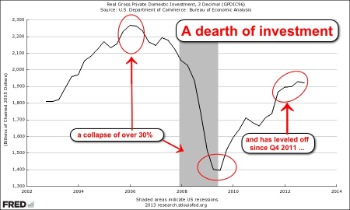Contents

Investors weighing whether to buy and sell may be wondering what is a bull vs. bear market mean and how should they respond? The overall market condition is a key factor when deciding what to do about an individual stock. Bull market growth has historically been longer and more sustained than bear market periods of decline. It’s common for individual investors to get spooked by bear market headlines and suffer from loss aversion bias, where losses loom larger than gains. Its articles, interactive tools and other content are provided to you for free, as self-help tools and for informational purposes only. NerdWallet does not and cannot guarantee the accuracy or applicability of any information in regard to your individual circumstances.

A bull market is a market that is on the rise and where the conditions of the economy are generally favorable. A bear market exists in an economy that is receding and where most stocks are declining in value. Because the financial markets are greatly influenced by investors’ attitudes, these terms also denote how investors feel about the market and the ensuing economic trends. It may also cause investors to sell their investments for less than they paid for them, which can hinder their abilities to reach their financial goals long term. A bear market typically ends when prices reach a point that they can no longer drop anymore, and investor sentiment begins to rise.

The https://forex-trend.net/ curve flattens as a result of the difference between long term interest rate and short term interest rates shrinking. When traders expect the yield curve to flatten, they will go short short-term bonds and long long-term bonds. As the difference between short and long term interest rates converge, the trader should earn more from the short-term bonds they sold short, than they lose on the long-term bonds they went long. The term “bull vs. bear” denotes the ensuing trends in stock markets – whether they are appreciating or depreciating in value – and what is the investors’ outlook about the market in general. Investors should spend time making a watch list of stocks to buy when the market improves. During a bull market, investors should focus ongrowth stocksand follow CAN SLIM to select stocks and to time buying for maximum returns.
Cyclical bear markets tend to be shorter, such as months or a year. The typical bear market lasts just about 10 months on average, making the rapid turnaround in 2020 even more unbelievable. Bear markets are more extreme versions of corrections, which are defined as a drop of 10% to 20% in the general market. During the Great Recession at the end of the 2000s, for example, market prices dropped by more than 50%. Things were even worse during the Great Depression, with prices falling by an astonishing 83%.
The Etymology of the Terms
The term ‘bull’ originally meant a speculative purchase in the expectation that stock prices would rise; the term was later applied to the person making such purchases. By definition, the market balances buyers and sellers, so it is impossible to have «more buyers than sellers» or vice versa, although that is a common expression. In a surge in demand, the buyers will increase the price they are willing to pay, while the sellers will increase the price they wish to receive. The bear market, then, is measured retrospectively from the recent highs to the lowest closing price, and its recovery period is the lowest closing price to new highs. Another commonly accepted end to a bear market is indices gaining of 20% from their low.
Confidence is high, and can be infectious, which can have the effect of propelling a bull market even further. On the other hand, a bear market is when stock prices have fallen by 20% since the last market high, and attitudes of negativity and pessimism are the norm. So, investors can sometimes act impulsively, afraid to lose money, leading to bad investment decisions. It exists when the prices – normally the closing prices – of securities or indexes that track a set of securities, typically those of equities, rise. While not every stock will necessarily increase, the market’s main equity indexes will.
Discover the 10 best stock market movies to watch today for entertainment and also educational purposes. As a stock investor, you’ll likely experience both on your stock investing journey. The terms are derived from the way each animal attacks its opponents — a bull lunges its horns up while a bear swipes down . The Wall Street Crash of 1929, which erased 89% of the Dow Jones Industrial Average’s market capitalization by July 1932, marking the start of the Great Depression.

Explanatory brochure available upon request or at Past performance is not indicative of future performance. A bear market is linked to a weakened economy where unemployment rates sour and people are afraid to spend. This, in turn, leads to businesses losing profits that affect their stock prices by lowering their value.
Bull Vs. Bear Market
The investing information provided on this page is for educational purposes only. NerdWallet does not offer advisory or brokerage services, nor does it recommend or advise investors to buy or sell particular stocks, securities or other investments. While bear markets can be scary, they are a natural part of the economic cycle and often lead to even stronger market returns. A diversified portfolio constructed for your financial goals can prepare you to confidently stay the course and weather any kind of market. While you may be tempted to sell off your investments to avoid losing more money during a bear market, doing so locks in the losses you’ve experienced. You then have the difficult decision of figuring out when to reenter the stock market.
At any given time, the market is usually described as one or the other—with bull and bear markets alternating as part of an ongoing cycle. A bull market is a period of months or years when stock prices, measured by a market index, increase 20 per cent or more from a previous low. Bull markets are characterized by broad investor optimism about the state of the market, and tend to coincide with periods of sustained economic growth. Bull markets got their name from the way bulls attack, by thrusting their horns upward.
How should investors react to a bull market?
Stock market movement cannot be predicted accurately, in the short-term, just like the event of seeing a head or tail when a coin is tossed. However, in the long term when a series of upward or downward movement occurs in succession, a trend can be seen, and this is denoted as a bear market or bull market. During the secular bull market, the S&P 500 rallied 391% and the Dow Jones Industrial Average – a term that denotes a bull market lasting many years – averaged 16.8% annual returns. A bull market is a sustained rising stock market, sometimes defined as a 20% rally from a recent low. The term can also be used regarding bonds, currencies and other securities.
- Are you wondering why these phases are named “bull phase” and “bear phase”?
- These professionals can help you determine how you may want to change your investments during a bear or bull market or whether you should stay the course.
- However, when planning, it can be beneficial to include securities that have the potential to grow during a bear market.
- Many investors wish to buy securities while few are willing to sell.
Open to https://topforexnews.org/ Investing is a wholly-owned subsidiary of Public Holdings, Inc. (“Public Holdings”). This is not an offer, solicitation of an offer, or advice to buy or sell securities or open a brokerage account in any jurisdiction where Open to the Public Investing is not registered. Securities products offered by Open to the Public Investing are not FDIC insured.
For example, during a bull market the Dow Jones Industrial Average and the S&P 500 can be expected to climb, even as some individual equities and sectors may not. Unlike a bear market, there is no universally accepted percentage gauge for how much a market has to rise before it qualifies as a bull market. The longest bull market in American history for stocks lasted for 4,494 days and ran from December 1987 to March 2000.
Secondary trends
If the stock market is bearish, then you can consider increasing your portfolio’s allocation to bonds or even converting a portion of your portfolio into cash. You can also consider geographically diversifying your holdings to benefit from bull markets occurring in other regions of the world. The imagery of a bull-rushing symbolizes the effect a general rise in stock markets has on investors. Confidence is high and investors “rush” into the market to buy stocks. A Bear Market experiences a decrease in stock prices over a period of time.
We break down what drives bull and bear markets, the effect they have on your portfolio and how to invest smartly during both market conditions. When we experience a bull market, investors feel upbeat and invest with confidence. In a bear market, attitudes are negative, and investors act impulsively as they try to move money to protect what they have, leading to uncertainty and doubt and lower stock prices. A bull market is a term given to a stock market condition when it is rising or expected to rise.
Therefore, defensive stocks are stable in both economic gloom and boom cycles. These are industries such as utilities, which are often owned by the government. They are necessities that people buy regardless of economic conditions. Sometimes a market may go through a period of stagnation as it tries to find direction.
Someone can be https://en.forexbrokerslist.site/ish about either the market as a whole, individual stocks or specific sectors. Someone who believes ABC Corp.’s stock will soon go down is said to be bearish on that company. The yield curve steepens as a result of the difference between long term interest rates and short term interest rates widening. As discussed above this can happen either from longer term interest rates rising faster than shorter term interest rates or from short term interest rates falling faster than long term interest rates . When traders expect the yield curve to steepen they will go long short-term bonds and short long-term bonds. As the difference between short and long term interest rates widens, the trader should earn more on the short-term bonds they bought than he loses on the long-term bonds they sold short.

0 Responses
Stay in touch with the conversation, subscribe to the RSS feed for comments on this post.
You must be logged in to post a comment.